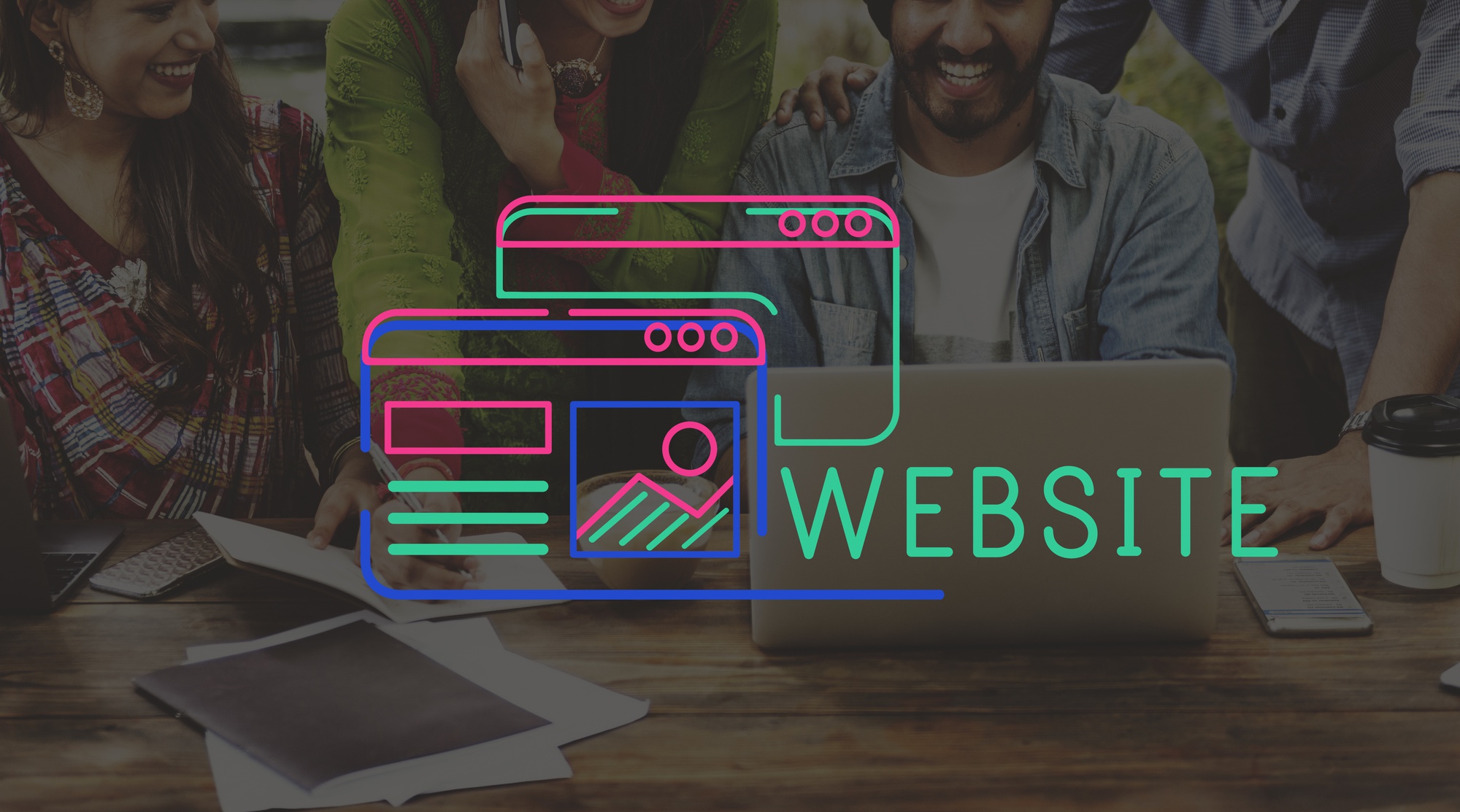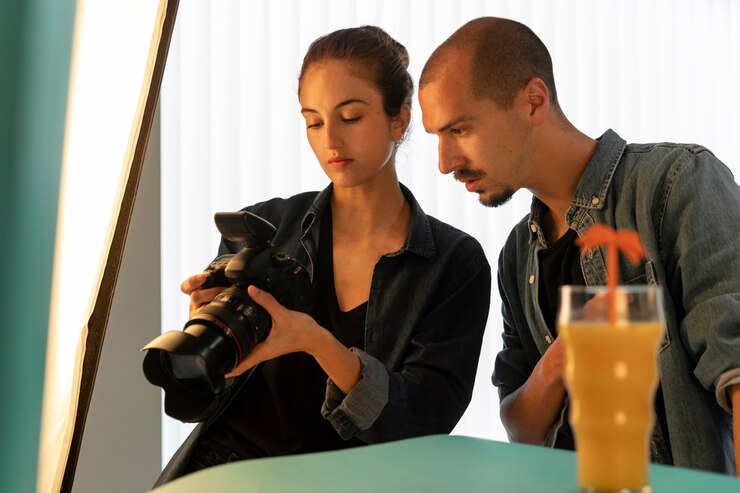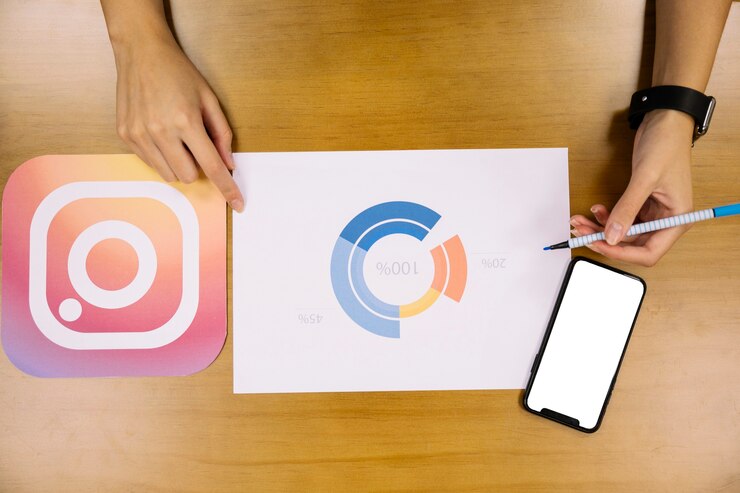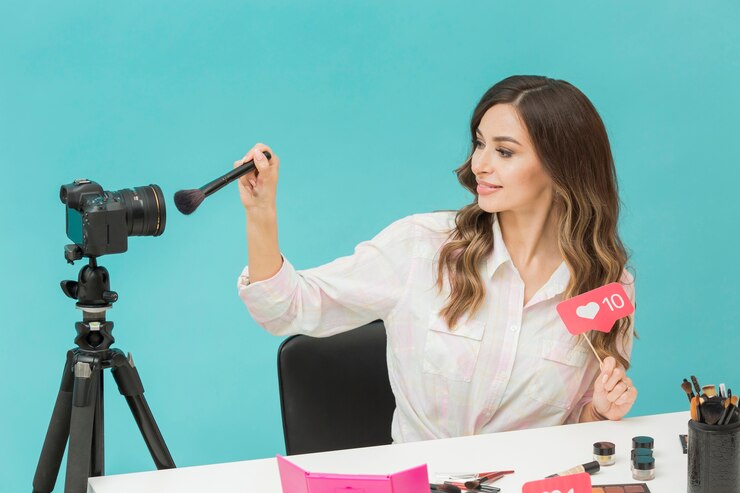Building Mobile-Friendly Websites: A Guide to Custom Website Development Techniques
Flexbox is a CSS3 layout module that ensures your website’s responsiveness works smoothly across all devices. This tool is essential for modern website design & development because it makes building creative layouts simple without the need for complex code. With Flexbox, you can easily create designs like split screens, sidebars, and equal-height modules. To start, set a parent container’s display to “flex,” then define how its child elements are arranged. This method is both simple and flexible.

Navigation Matters
A good navigation system is crucial for any responsive design. In 2007, websites often used cluttered sidebars with low-contrast text that was hard to read. Today, websites like Microsoft use clean designs and mobile-friendly menus. Navigation is usually condensed into a hamburger menu on mobile devices to save space.
When designing navigation, include 4-5 main links that guide users to the most important pages. These links should be simple and accessible. To improve usability, use collapsible menus, icons paired with text, and clear labels. Avoid sidebars, as they can distract users. Instead, focus on creating a straightforward path for visitors to follow.
For accessibility, ensure your navigation has alt text for images, readable fonts, and inclusive language. A good navigation system supports the overall website design & development strategy.
Plan Your Content Organization
Designing without a clear content plan is like framing a picture before painting it. Content and design should complement each other. Take inspiration from Arobase Creative, which combines visually appealing infographics with clear text. This approach ensures content is easy to understand and engaging.
Start by listing the key messages you want to communicate. Organize these ideas so they flow logically. Use infographics to break down complex information and enhance readability. You can also use responsive templates to create a seamless user experience. Effective content organization is essential for successful custom website development.
Design with Mobile in Mind
Over half of global web traffic comes from mobile devices. Designing for mobile-first ensures your site performs well on small screens. Prioritize features like navigation simplicity, fast loading speeds, and high-resolution images.
Use adaptable CSS media queries and frameworks to make your site responsive. Tools like Webflow can help streamline the mobile design process without requiring advanced coding skills. A mobile-first approach is critical for modern website design & development.
Add Clear Call-to-Action (CTA) Buttons
Call-to-action buttons guide users through your website. These buttons should be easy to find and understand. Use familiar shapes like rectangles or circles, and make sure they are finger-friendly for touchscreens. Keep enough space around buttons to prevent accidental clicks.
Choose colors that align with your brand while ensuring your CTA buttons stand out. For example, a bright green “Download Now” button grabs attention. Use shadows or gradients to make buttons more noticeable.
Keep Your Content Concise
Mobile screens limit how much text you can display. Write short, impactful copy that conveys your message quickly. Use typography that reflects your brand identity and is easy to read. Avoid overloading your site with multiple fonts.
Typography Tips for Smaller Screens
Readable typography is vital for mobile devices. Use a font size of at least 16px for body text and adjust line height to around 1.25 to 1.5 for better spacing. Test your text on different devices to ensure readability. Stick to a consistent font style and avoid using too many variations.
Use Negative Space Wisely
Negative space, or white space, helps create balance and focus on your content. Avoid overcrowding your layout with unnecessary elements. Use space strategically to highlight important sections of your website. This enhances both readability and user experience.
Test a Responsive Prototype
Testing your design on real devices is essential. Functional prototypes help you understand how your website will look and feel for users. Test for issues like broken layouts or slow loading times. A visual web development platform can simplify this process and save time.
Optimize Images for Fast Loading
Fast-loading images improve user experience and SEO. Use responsive images that scale properly on all devices. This ensures your site loads quickly without compromising image quality. Tools like Webflow can help you resize images efficiently.
Flexbox: A Game-Changer
Flexbox simplifies the creation of responsive layouts. By setting a parent container to “flex,” you can control how child elements are distributed. This approach works well for layouts like hero covers and Z-pattern feature lists. It’s an essential tool for custom website development.
Responsive Design for a Better Web
Responsive design has revolutionized how we create websites. It helps eliminate unnecessary elements and ensures users find what they need quickly. With tools like Flexbox anyone can master website design & development.
FAQs
Q1: What is custom website development? A: Custom website development involves creating a unique website tailored to your needs and goals, ensuring it aligns with your brand and audience.
Q2: Why is mobile-first design important? A: Mobile-first design ensures your website works well on smaller screens, which is essential since most users access websites through mobile devices.
Q3: How can I improve navigation on my website? A: Use clear labels, limit the number of main links, and include icons or collapsible menus to simplify navigation. Test your design on different devices to ensure usability.
Q4: Why should I choose Ladenek Media for my website needs? A: Ladenek Media specializes in custom website development and offers expert solutions to help your business grow. Whether you’re a marketing company for small business or an entrepreneur, we’ve got you covered.
Final Thoughts
Designing a responsive website doesn’t have to be complicated. You can create a user-friendly site by focusing on mobile-first design, clear navigation, and fast loading speeds. Whether you’re a marketing company for small businesses or a freelancer, these tips will help you build better websites. At Ladenek Media, we specialize in custom website development to meet your needs. Start your responsive design journey today!
The Ultimate Guide to Instagram Posting Times for Boosting Engagement in 2025
In 2025, knowing the best time to post on Instagram is crucial to increasing engagement. At Ladnek Media, we’ve gathered the most up-to-date insights on posting times, ensuring your content reaches the right audience at the right moment. Whether you’re a small business or an influencer, this guide will help you optimize your posting schedule for maximum results. If you’re looking for affordable digital marketing services, we can assist in crafting a strategy that fits your goals and budget, helping you improve your Instagram presence.
Overall Best Time to Post on Instagram
The best overall time to post on Instagram in 2025 is 5 AM. After analyzing over 6 million posts across multiple time zones, we found that content posted between 3 AM to 6 AM yields the highest engagement. These early hours give your posts more chances to be seen with less competition. Whether you’re running a marketing company for small businesses or creating personal content, posting during these hours gives you a better chance of success. Posting at the right time can help your content stand out and boost your chances of attracting followers.
Does Posting Time on Instagram Matter?
Yes, posting time does matter. But other factors also play a role. If you post when your audience is active, the chances of your posts getting more likes, comments, shares, and saves are higher. Engagement is a significant factor for Instagram’s algorithm, and higher engagement helps your posts reach more people. However, creating engaging content is just as important as timing. If your posts don’t resonate, even the best posting time won’t make much of a difference.
Best Time to Post Instagram Reels
Instagram Reels are a popular format, and timing them right can give your posts a boost. Based on an analysis of 975K Instagram Reels, the best time to post Reels is 12 AM. The best day to post Reels is Monday, with high engagement between 12 AM and 6 AM. Reels are perfect for quick content that can go viral, so posting during these hours helps you tap into that potential.
Best Time to Post Carousels
If you love posting photo collections, carousels are a great way to showcase your content. In 2025, the best time to post a Carousel is at 5 AM, particularly on Tuesdays. Posting at this time gives your photos the best chance to be seen by your followers, whether they’re vacation photos or user-generated content (UGC) roundups. Scheduling your content early in the morning helps maximize engagement.
Best Day to Post on Instagram
The best day to post on Instagram is Monday. Posting between 12 AM and 6 AM leads to the highest engagement for posts. This early bird approach works well because people are scrolling through their feeds as they begin their week. Posting at these times increases your chances of being seen by a wide audience.
Best Time to Post on Instagram by Day
Here’s a breakdown of the best times to post throughout the week:
- Monday: 5 AM is the best time, but 11 PM also works well.
- Tuesday: 5 AM, the same as most days.
- Wednesday: 3 AM, with strong engagement until 5 AM.
- Thursday: 4 AM to 5 AM.
- Friday: 3 AM to 5 AM.
- Saturday: 5 AM is the best time, even on weekends.
- Sunday: 12 AM, 5 AM, and 11 PM are ideal times for posting.
Best Time to Post by Follower Count
The best time to post can also depend on your follower count. Different follower levels have different engagement windows:
- Nano Influencers (1K-5K followers): Monday to Friday at 5 PM.
- Micro Influencers (5K-25K followers): Monday at 11 PM and Friday at 12 AM.
- Mid-Tier Influencers (25K-100K followers): Sunday at 12 AM and Monday at 11 PM.
- Macro Influencers (100K-500K followers): Sunday and Monday at 12 AM.
- Mega Influencers (500K+ followers): Monday at 10 AM
Affordable Digital Marketing Services
For businesses looking to expand their reach on Instagram, investing in affordable digital marketing services can help create a strategy tailored to your audience and business needs. It’s essential to align your content and posting schedule with audience behavior to improve engagement rates.
Social Media Management Consultant
A social media management consultant can help you optimize your Instagram strategy by analyzing the best times to post based on your unique audience. They can also assist in content creation and help manage your Instagram account efficiently to drive engagement.
Marketing Company for Small Business
If you run a small business, working with a marketing company for small business can take your Instagram strategy to the next level. They can help you identify your audience, determine the best times to post, and boost engagement to increase your visibility.
Frequently Asked Questions
1. Why is posting time important on Instagram?
Posting at the right time increases the likelihood that your followers will see and engage with your posts. Higher engagement boosts your content’s visibility on Instagram.
2. When is the worst time to post on Instagram?
Based on data, Thursday at 3 AM and Saturday at 11 PM are the worst times to post, as they tend to have lower engagement rates.
3. Should I post at night or in the morning?
Morning posts generally perform better. The best engagement typically happens between 3 AM to 6 AM each day.
4. How can a social media consultant help me improve my Instagram engagement?
A social media management consultant helps optimize your posting schedule and content strategy to ensure you’re reaching your audience at the most effective times.
Wrap Up:In conclusion, understanding the best times to post on Instagram is key to boosting engagement and reaching your audience effectively. For tailored strategies and growth, consider partnering with a marketing company for small businesses like Ladnek Media. Let us help you maximize your social media potential and achieve success.
Maximize Your Brand’s Potential with Well-Planned Photography and Videography Services
Planning a brand photoshoot can help your business by creating clear and attractive images. Good photography and videography services tell your brand’s story, grab attention, and build trust, making you stand out. Whether launching a product or improving your online presence, a well-planned photoshoot ensures every picture matches your goals. This guide shares easy steps to organize a successful brand photoshoot. With Ladnek Media, you can create images that grow your business and connect with your audience.
Step 1: Define Your Brand and Audience
Understanding your brand messaging and target audience is the foundation of a successful photoshoot. Reflect on your mission, vision, and values. Identify your ideal client and consider what makes your brand unique. These insights will help create images that resonate with your audience and differentiate your business from competitors.
Step 2: Clarify the Photoshoot’s Purpose
Unlike personal or casual photography, brand photos serve a specific marketing goal. Define this purpose clearly. For example:
- Announcing a new product or service
- Showcasing a seasonal collection
- Creating a professional portfolio to enhance your online presence
Knowing your purpose ensures the images align with your marketing goals, making your photoshoot a valuable investment.
Step 3: Identify Where to Use the Photos
Think about where these images will be featured. Common uses include:
- Websites and landing pages
- Social media posts and ads
- Email newsletters
- Catalogs or lookbooks
- Print materials such as brochures and business cards
Discuss these plans with your photographer to ensure images are optimized for various platforms, whether for digital use or high-resolution printing.
Step 4: Create a Mood and Inspiration Board
Compile ideas and inspiration that reflect your brand’s style and message. Use colors, props, and sample photos to create a mood board that communicates the desired vibe for your shoot. Share this with your photographer to ensure a cohesive vision.
Show your mood board to someone outside your team for extra feedback. This will help confirm that your visuals are sending the right message.
Step 5: Choose and Book Locations
The right location sets the tone for your brand photoshoot. Whether it’s a studio, outdoor setting, or workspace, ensure it aligns with your brand’s personality. Book locations early and secure any necessary permits. A professional videography services team like Ladnek Media can assist with location recommendations and planning.
Step 6: Schedule and Hire Additional Talent
Determine if your shoot requires extra expertise. This might include:
- Hair and makeup artists
- Models for product or lifestyle photography
- Food stylists, prop designers, or set decorators
Coordinating with additional talent enhances the quality and professionalism of your shoot.
Step 7: Gather Props and Accessories
Prepare all props and accessories that will bring your vision to life. Ensure these items align with your brand’s messaging and the purpose of the shoot. For example:
- Laptops and notebooks for workspace imagery
- Dishes and utensils for food photography
- Seasonal decor for a themed collection
Step 8: Collaborate with Your Photographer
Work closely with your photographer or videographer to finalize the creative direction. Share your brand’s goals, mood board, and shot list. Professional photography and videography services ensure every detail is captured beautifully.
Step 9: Plan the Shot List
A detailed shot list ensures no key moments are missed. Include specific angles, compositions, and product features to be highlighted. For example:
- Close-ups of product details
- Lifestyle shots with models using your product
- Behind-the-scenes images to showcase authenticity
Step 10: Execute the Photoshoot
With proper planning, the photoshoot day will run smoothly. Keep the atmosphere light and enjoyable with music and snacks. Trust your team to bring your vision to life while capturing high-quality images that elevate your brand.
Why Choose Ladnek Media
Ladnek Media is a trusted name in the industry, offering photography and videography services that help businesses stand out. With years of experience, innovative techniques, and a commitment to quality, Ladnek Media delivers exceptional results. Whether you need professional videography services for a product launch or creative visuals for a marketing campaign, their team ensures your brand’s story is told beautifully.
Empowering Your Brand
Ladnek Media aims to empower businesses and creatives by fostering innovation and creativity in every project. With a proven track record and glowing testimonials, they are the go-to marketing company for small business owners looking to make a lasting impression.
Frequently Asked Questions (FAQs)
1. Why is professional photography important for my brand?
Good photos create a strong, consistent look for your brand. They make your business more appealing and help customers connect, making you stand out in a crowded market.
2. How can Ladnek Media help with my brand photoshoot?
Ladnek Media provides expert photography and videography services. From planning to editing, they ensure your photos match your brand and marketing goals for high-quality results.
3. What should I include in my mood board?
Include colors, props, photos, and design ideas that reflect your brand. This helps the photographer understand your vision and create images that fit your style and message.
4. Why should I choose Ladnek Media over other providers?
Ladnek Media is known for its creative approach, great customer service, and dedication to quality. It helps small businesses create stunning visuals that effectively tell their brand stories.
Final Words: Ladnek Media brings your brand to life with professional photography and videography services. Their expert team creates visuals that capture attention, build trust, and support your business goals. Whether for a product launch or marketing campaign, reach out to Ladnek Media today to craft images that captivate and inspire your audience!
Top Photography Apps to Enhance Your Photography and Videography Services in 2025
Today, smartphones are more than just for quick photos. They are now powerful tools for photography. New technology has created many mobile apps that help professional photographers in different ways. These apps are useful for editing a photo, taking one, or planning a shoot. They are especially helpful for real estate photography, where getting the right photo is important. Ladnek Media, a top marketing company for small businesses, recommends these essential apps for photographers to enhance their work and improve their business in 2025.

The Photographer’s Ephemeris
This app helps photographers plan outdoor shoots by showing how natural light will fall on a place. It helps find the best time and angle for good photos, especially real estate.
Exposure Calculator and Long Exposure Calculator
These apps help photographers find the right shutter speed, exposure, and aperture for long-exposure shots, which is useful for getting perfect long-exposure photos.
PhotoPills
PhotoPills is an app that shows where the sun and moon will be at any time or place. It’s helpful for outdoor and real estate photography to plan the best lighting.
Ubookr
Ubookr is a helpful app for real estate photographers. It helps you manage your business by letting you schedule shoots, share photos, and send invoices. Clients can easily book services online. It’s the perfect tool for running a real estate photography business.
Sylights
Sylights is a useful app for photographers who want to remember their lighting setups. You can make and save lighting diagrams to repeat your best setups. Whether photographing houses or doing portraits, Sylights helps keep your results consistent.
A+ Signature
A+ Signature is an important app that protects your photos from theft. You can create a custom watermark with your signature and add it to your photos. This helps keep your real estate photos safe and shows your ownership.
Watermark X
Watermark X is an app that helps protect your photos. It allows you to add copyright details and personalize your watermark, making your images safe and professional. It also has editing tools to make your photos look even better.
Pixlr
Pixlr is a powerful photo editing app with many creative tools. It has over 2 million combinations of filters, effects, and overlays, allowing photographers to make beautiful edits. It’s great for real estate photographers who need to improve property photos quickly.
Adobe Photoshop Lightroom
Adobe Lightroom is a popular app for editing photos. The mobile version lets you edit RAW images on your phone or tablet. This is perfect for photographers who need to make quick changes to real estate photos while on the go.
Snapseed
Snapseed is a free and easy-to-use photo editing app that lets you retouch photos precisely and works with JPG and RAW files. It’s a great choice for photographers, including real estate photographers, who need an affordable editing option.
FAQs:
1. Why should I use a photo editing app like Lightroom for real estate photography?
Lightroom helps photographers quickly edit RAW images and enhance details, which is crucial for showcasing real estate properties. Similar tools are used for high-quality photos and videos.
2. How can these apps help improve my photography business?
These apps simplify editing, watermarking, and scheduling, streamlining your photography business. Many videography services use similar apps to manage workflows and ensure quality results.
3. What are the benefits of using Ubookr for real estate photography?
Ubookr organizes booking, scheduling, invoicing, and photo sharing, streamlining photography operations. It’s also useful for photographers offering professional videography services to improve efficiency.
4. Can these apps help me promote my real estate photography?
Instagram and Flickr help showcase high-quality images, promoting real estate photography. A marketing company like Ladnek Media can further promote your work across digital platforms.
5. How can I protect my real estate photos from theft?
A+ Signature and Watermark X protect real estate photos by adding custom watermarks and copyright information. Videography services also use these techniques for content protection.
Conclusion
Having the right tools is crucial in real estate photography. Apps like PhotoPills help plan shots, while Lightroom and A+ Signature assist in editing and protecting your work. If you want to grow your photography and videography services in 2025, these tools will help improve your workflow and business management.
Ladnek Media, a professional marketing company for small businesses, recommends these apps to help photographers streamline their business operations and enhance the quality of their work.
Top SEO Audit Tools to Boost Your Website’s Performance in 2025
An SEO audit is an important check-up for a website. It helps find problems and areas to improve. An SEO audit is not just one quick task but a complete review of different parts of your website. It looks at things like how well the website works technically, how it ranks on search engines, how much traffic it gets, how users experience the site, the quality of the content, and more. Regular audits can help the site get more visitors, rank higher on search engines, and make more money. For affordable digital marketing services, Ladnek Media offers expert SEO audits to help improve your website’s performance and increase visibility online.

Why Do SEO Audits Matter?
Websites work with others. As you keep adding new content, making changes, or improving the design, problems like broken links, technical issues, or missing content can arise. Even small SEO problems can grow over time and affect your website’s ranking on search engines like Google. Regular SEO checks help find these issues early and can improve your rankings. Many experts suggest doing an SEO check at least once a year, but you may need to do it more often if you notice a drop in traffic or rankings. While SEO agencies can do these checks, you can also do them yourself using tools that are either free or low-cost. For affordable digital marketing services, regular SEO audits can help maintain your site’s health and visibility.
Google Lighthouse Audit
Google Lighthouse is a free tool that checks how well your website works, including its speed, accessibility, SEO, and general best practices. Since Google makes it, it helps you understand what Google looks at when ranking websites. You can use this tool in different ways:
- In Chrome DevTools, for pages that need a login
- Automatically with shell scripts
- As a Node module
- Through a web UI without installing anything
The easiest way to use Lighthouse is through Chrome DevTools. Just open a webpage in Chrome, right-click and choose “Inspect,” go to the “Lighthouse” tab, and click “Generate Report.” After a few minutes, you’ll get a full report with tips on improving your site.
Screaming
Screaming Frog is a popular SEO tool for checking websites for problems. It works like a search engine spider, finding issues like broken links, duplicate content, missing meta tags, and slow pages. It can also create XML sitemaps and analyze page titles and metadata.
The free version lets you check up to 500 web pages. You can buy the premium version if you need to check larger sites or want extra features. Premium users get advanced tools like the Log File Analyzer, which helps you understand how bots visit your site.
Best for: Small to medium businesses needing a strong SEO tool.
Semrush:
Semrush is an all-in-one SEO tool that is very popular with agencies and big businesses. Its features include keyword research, tracking rankings, analyzing ads, studying competitors, and helping with content marketing. One of its best features is the SEO audit tool, similar to the one in Screaming Frog.
Semrush’s audit tool checks for problems with on-page SEO, crawlability, broken links, redirects, and nofollow errors. It can also run scans regularly and provide automatic reports, which is great for agencies that handle many clients’ websites. Semrush is also helpful for businesses in different languages, as it supports audits in multiple languages.
Sitechecker:
Sitechecker is an easy-to-use SEO tool for website checks. It connects to Google Search Console and Google Analytics to provide ongoing monitoring and detailed site reviews. The checklist feature is great for SEO teams, as it lets users create tasks to follow over time.
Besides checking backlinks and tracking keywords, Sitechecker shows how well a site performs, such as how fast pages load and any on-page SEO problems. It also has a Chrome extension that lets users check individual pages directly in their browser.
Surfer SEO
Surfer SEO is a tool that helps improve your website’s content. It checks things like the frequency of keywords, the length of the content, meta tags, and the organization of the content. It also looks at your competitors’ actions and shows you ways to improve your content.
One special feature of Surfer SEO is that it can suggest keywords you might be missing, which could bring more visitors to your site. For people who want to make content updates easier, Surfer SEO also offers tools to automate the process, ensuring your site follows the latest SEO rules.
Ahrefs:
Ahrefs is a popular SEO tool used by marketers and agencies. It is fast and easy to use, helping users quickly check websites for issues like missing titles, broken links, and errors with meta tags. Ahrefs is also well-known for its tools that help analyze backlinks and find keywords.
One of Ahrefs’s best features is that it saves crawl data so you can track how your website is improving over time. It’s simple design and quick analysis make it a favorite tool for businesses of all sizes.
Frequently Asked Questions:
1. What is an SEO audit, and why is it important for my website?
An SEO audit checks your website for problems like broken links and slow pages. It helps improve search rankings and user experience.
2. How often should I perform an SEO audit on my website?
An SEO audit should be conducted at least once a year, and if your website’s traffic or rankings drop, it should be done more often.
3. How can Ladnek Media help with SEO audits for my website?
Ladnek Media provides SEO audit services to find issues and improve your website’s ranking, using top tools to enhance performance.
4. Which SEO audit tool is best for small businesses?
Tools like Google Lighthouse and Screaming Frog are great for small businesses. They are easy to use and have free or affordable versions.
5. What are the key features to look for in an SEO audit tool?
Look for features like broken link checks, page speed analysis, and keyword tracking. These help improve your website’s SEO and overall performance.
ConclusionSEO audit tools are very useful for improving your website. They help find problems, like broken links or missing content, that can stop your site from ranking higher. The best tool for you depends on your business size, how much money you have, and what part of SEO you want to work on. Using these tools regularly to check your website, you can keep it in good condition so it ranks well on search engines and gives a great user experience. Whether you run a big agency or a small business, there’s an SEO audit tool for you. For marketing companies for small business solutions, Ladnek Media offers expert assistance in finding the right tools for your needs.
Top Instagram SEO Tips to Increase Visibility and Engagement Fast
Instagram has billions of active users, giving businesses a great chance to grow. You need to use Instagram SEO Tips to stand out in such a big crowd. By improving your profile and content, you can reach more people and get more engagement, helping your brand grow.
This article gives simple Instagram SEO tips to help your business get more attention and followers. These tips will show you how to improve your profile and use hashtags correctly to get the most out of Instagram. If you’re a small business looking for expert advice, working with a marketing company for small businesses like Ladnek Media can help optimize your Instagram strategy for success.

What Is Instagram SEO?
Instagram SEO is the improvement of a profile and its content to rank higher in search results and become more accessible to users. Like website SEO, Instagram SEO leverages keywords, hashtags, engagement, and more to increase visibility and reach.
With the right approach, Instagram SEO ensures your profile and posts appear when users search for topics related to your business.
Why Is Instagram SEO Important?
From an SEO perspective, Instagram SEO can boost visibility through ranking. Here’s why it matters:
– Higher rankings in search results lead to more people discovering your account.
– Increased visibility translates to more followers and broader brand reach.
– More Engagement: Highly visible posts tend to be liked, commented on, and shared more, further extending your reach.
Optimize Instagram to keep your brand competitive, drive loyalty to the brand, and add noise in an already noisy marketplace.
Best Practices of Instagram SEO
These are nine tips for optimizing your Instagram SEO and growing your audience.
1. Optimize Your Instagram Profile
Your Instagram bio and handle should reflect relevant keywords about your business or niche to improve searchability.
– Bio: Use clear keywords that define your business or products.
– Handle/Profile Name: Include relevant keywords in your username or profile name.
– Hashtags: Adding hashtags to your bio can help attract larger audiences.
For example, if you’re a wedding photographer, your bio might include keywords like “wedding photography” or “photo tips.”
2. Optimize Your Captions
Captions provide another opportunity to use keywords and improve SEO. A well-crafted caption can help your content appear in searches for specific keywords.
– Include relevant keywords in your captions.
– Use emojis to make captions more engaging.
– Ask questions to encourage interaction and comments.
For increased engagement, utilize Instagram Reels and include hashtags, but limit the hashtags to 3-5 per post to keep your caption clean and effective.
3. Use Strategic Hashtags
Hashtags increase visibility. Whenever a keyword is searched, related posts will appear, too.
Use the trendy ones and avoid any generic tags. Use niche-specific tags that tie in with your business. Instead of #photography, opt for #weddingphotography or even #photooftheday.
4. Add Location Tags
The addition of location tags helps to reach local audiences who are searching for location-specific content.
– Use location tags such as #NewYorkPhotographer if you’re a photographer in New York.
– Use multiple location tags when applicable, particularly for businesses with a wide service area.
Using location tags increases the visibility of businesses targeting specific areas, thereby increasing discoverability.
5. Increase User Engagement
Engagement is a critical factor in Instagram SEO. Instagram ranks higher posts with more engagement (likes, comments, shares, and follows). To boost engagement:
– Run giveaways to encourage interactions.
– Use polls and quizzes to engage your audience.
– Post consistently and leverage short-form content like Reels to keep followers interested.
Collaborating with a social media management consultant can help you develop strategies to increase engagement and boost your brand’s reach.
6. Publish High-Quality Content
Good-quality content that is attractive to the eye will attract and keep followers. Good-quality content that flows well will keep your audience engaged and inclined to share it, thus increasing its visibility.
Frequently Asked Questions:
Q 1. How do I improve my Instagram SEO?
Optimize your bio, captions, hashtags, and location tags to improve Instagram SEO. Engage regularly with your audience to increase your content’s visibility.
Q 2. Can a marketing company help with Instagram SEO?
Companies like Ladnek Media can help create an Instagram SEO strategy, optimize your profile, and grow your audience with effective content and engagement strategies.
Q 3. What are hashtags, and why are they important?
Hashtags are keywords preceded by a “#” symbol that categorizes the content. Using targeted hashtags helps users discover your posts, improving visibility and engagement.
Q 4. How do I increase engagement on Instagram?
To increase engagement, run giveaways, post regularly, use interactive features like polls, and respond to comments. Engaging with followers encourages more interactions and boosts visibility.
Conclusion
Instagram SEO has recently been noted as necessary for growing a brand. A well-optimized profile, proper usage of keywords, hashtags, and location tags, and constant engagement will significantly improve your presence on Instagram.
For small businesses looking to boost their Instagram SEO, partnering with a marketing company for small business like Ladnek Media can provide expert guidance and tailored strategies to enhance your online presence.
10 Small Business Marketing Strategies That Really Work | Unlock success
Marketing is essential for small business owners looking to establish a strong presence in their niche and build meaningful customer connections. Many assume a large budget or extensive expertise is required, but this isn’t the case. With the right approach, small business marketing can be affordable and effective, especially when guided by a digital marketing specialist. Here are some strategies that Ladnek Media recommends for success.

What Do You Mean by Small Business Marketing
Small business marketing helps promote your products or services to attract new customers and increase brand awareness. These efforts are crucial for s tanding out from the competition and building customer loyalty, especially with guidance from a digital marketing specialist.
Before diving into specific strategies, start with two essentials: define your target audience and create a clear brand identity. These elements are the foundation of any successful marketing plan.
# 1. Identify Your Ideal Customer
Begin by defining who your ideal customer is. This means creating a detailed profile that covers their interests, needs, and purchasing behaviors. Rather than trying to reach everyone, narrow your focus to segments that align closely with your brand.
– Key Questions to Ask:
– What age group and gender does my customer belong to?
– What values and beliefs do they hold?
– What motivates them to make a purchase?
Market research, surveys, and data analytics from platforms like Google Analytics can refine your customer profile over time.
# 2. Differentiate with a Unique Value Proposition (UVP)
A strong UVP explains what makes your brand unique and why customers should choose you. It should highlight:
– How your product solves a customer’s problem.
– What sets you apart from competitors?
For example, a skincare brand focused on eco-friendliness could highlight ethical sourcing and environmental impact. Aligning your UVP with values that resonate with your customers can strengthen your brand’s connection to them.
# 3. Focus on One Social Media Platform
For small businesses, it’s better to excel on one social media platform rather than trying to cover them all. Choose a platform where your target audience is active and tailor your content for engagement:
– Instagram: Ideal for visual content targeting younger audiences.
– LinkedIn: Great for B2B businesses and professional content.
– TikTok: Works well with casual, authentic, and youthful vibes.
# 4. Build an Email List
Email marketing is a powerful tool for building relationships and converting interested prospects into customers. Offer value (such as discounts or downloadable resources) to encourage sign-ups. For effective email marketing:
– Use Simple Form: Keep sign-up forms brief.
– Segment Your List: Organize subscribers based on behavior or demographics for more relevant content.
Consider sending newsletters, special offers, and product recommendations tailored to each segment.
# 5. Create Valuable Content
Content marketing through blogs, tutorials, or how-to videos attracts customers by providing valuable information. This content also improves search engine rankings.
– Choose Topics: Address common customer questions or challenges.
– Vary content: Try blogs, videos, infographics, and social media posts.
# 6. Encourage Customer Reviews
Positive reviews increase credibility and attract new customers. Encourage satisfied clients to leave reviews on platforms like Google My Business and Yelp to build your reputation.
# 7. Optimize for Local SEO
Local SEO helps customers find your business in local search results. Complete your Google My Business profile with:
– Location, hours, and contact info.
– High-quality images.
– Positive reviews.
Local SEO can increase visibility and drive more local traffic.
# 8. Collaborate with Other Small Businesses
Partnering with other local businesses introduces you to a broader audience. For example:
– Joint Promotions: Offer discounts for customers who shop at both locations.
– Events: Host joint events or workshops.
Choose partners with a similar customer base to maximize impact.
# 9. Host Customer-Centric Events
Hosting events, even online, strengthens connections with new and returning customers. Event ideas include:
– Product launches.
– Webinars or Q&A sessions.
– Customer appreciation days.
# 10. Utilize User-Generated Content (UGC)
UGC, such as customer photos and testimonials, is an authentic way to build trust. Use a branded hashtag to encourage customers to share their experiences on social media.

Frequently Asked Questions:
Q 1. Why should small businesses consider working with a digital marketing specialist?
Ans. Working with a digital marketing specialist offers small businesses tailored strategies that fit within limited budgets, helping them reach specific audiences without unnecessary spending.
Q 2. What platform should I choose for social media marketing?
Ans. This depends on where your audience spends the most time. Instagram and TikTok are ideal for younger audiences, while LinkedIn works best for B2B marketing.
Q 3. How does Ladnek Media support small businesses?
Ans. Ladnek Media provides customized marketing solutions that fit your brand, with a digital marketing specialist dedicated to ensuring you connect effectively with your target audience.
Q 4. How does local SEO benefit my business?
Ans. Local SEO increases your visibility within local search results, making it easier for nearby customers to find your business and visit in person.
Q 5. Do I need a large budget to start small business marketing?
Ans. No, many effective strategies are affordable. A marketing company for small businesses like Ladnek Media can help you achieve strong results without requiring a large budget, especially when working with a digital marketing specialist.
In Summary
These strategies will help small businesses grow without an extensive budget or expertise. Your business can establish a strong online and offline presence with consistent effort and a focus on customer relationships. Start implementing a few strategies and adjust them as you find what resonates most with your audience. At Ladnek Media, we’re here to help you achieve your goals with our digital marketing specialist team and services.
How to Get Influencers to Promote Your Brand? Know with Ladnek Media
If you want to grow your brand, working with influencers can help. Influencers have strong, trusted relationships with their followers, so their opinions matter. People pay attention when they talk about a brand and often take action. But how can you get influencers to talk about your brand? This informative content journey will discuss easy steps to start working with influencers through effective digital media outreach. Let’s read more about it in detail.
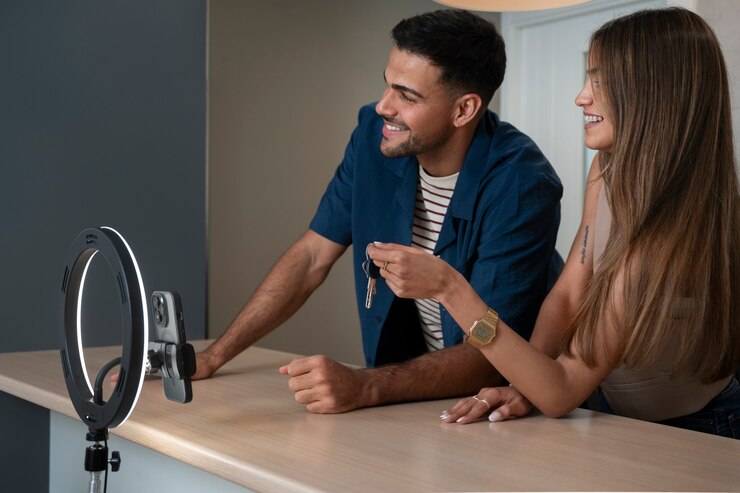
# 1. Know Your Brand Goals
Before you contact influencers, be clear about what you want to achieve. Do you want more people to know about your brand, increase sales, or reach a new group of people? Knowing your goals will help you pick the right type of influencer.
Brand Awareness: Work with influencers who have a large number of followers.
Increasing Sales: Look for influencers with high engagement. Their followers are more likely to trust their advice.
Reaching a New Audience: Choose influencers focusing on topics matching your brand’s values.
# 2. Find the Right Influencers for Your Brand
Only some influencers will work well for your brand. To choose the right ones, keep these points in mind:
Audience Match: Ensure the influencer’s followers are similar to your target customers.
Engagement Rate: See how often people like, share, or comment on their posts. High engagement shows they connect well with their audience.
Content Style: Check if their style matches your brand’s tone and image. An influencer with a similar look will feel like a natural fit for your brand.
You can use tools like Instagram Insights or platforms like Ladnek Media to check influencer stats or search for influencers on social media.
# 3. Interact with Influencers First
Before contacting an influencer, please spend some time interacting with their content. Follow them, like their posts, leave thoughtful comments, and share their content. This shows that you’re truly interested in what they do, not just wanting quick help with promotion. By building a connection first, the influencer may recognize your brand when you reach out, making them more likely to consider a partnership for brand growth.
# 4. Send a Personal Message
When you reach out, make it personal. Avoid sending a message that feels generic or could be sent to anyone. Mention specific things you like about their content and explain why you think they’d be a great fit for your brand. For example:
“Hi [Influencer’s Name], I’ve been following your work for a while, and I like how you [mention something unique they do, like their style or storytelling]. Your approach would connect well with our brand, Ladnek Media, and audience.”
Explain what you’re looking for in the partnership, like a product review, an Instagram story, or a post, and share what you’re willing to offer in return, like free products, discounts, or payment.
# 5. Provide Fair Compensation
Some influencers may promote products for free samples, but others may want payment. Respect their time and effort by offering fair compensation. This could be a paid partnership, free products, or a discount code they can share with their followers. Offering fair compensation shows you appreciate their work and can lead to a stronger, positive relationship.
# 6. Make Sharing Easy for the Influencer
Give the influencer all the important details, like key points about your brand, product information, and any hashtags or tags you’d like them to use. Influencers often appreciate it when brands make sharing simple and clear, which can aid in brand growth. Also, let them be creative. Influencers know their followers well and learn how to best discuss your product.
# 7. Track How Well the Collaboration Worked
Once the influencer posts about your brand, keep track of the results. Check if your sales, engagement, or follower count went up. This helps you see which influencers bring the most value and can guide future collaborations.
Here’s how you can track success:
New Followers: Check if your follower count increased.
Engagement: Look at the likes, comments, and shares on posts the influencer made about your brand.
Sales: Use special discount codes or referral links to see if sales have increased.
Frequently Asked Questions:
Q 1. How can I find influencers who fit my brand?
Ans. You can find influencers for your influencer outreach by searching social media for hashtags related to your industry or using influencer platforms like Ladnek Media. Look for influencers who share similar values, have a similar audience, and engage well with their followers.
Q 2. How much should I pay an influencer for promotion?
Ans. Influencer costs depend on follower count, engagement rate, and content type. Some may accept free products, while others charge a fee. Be sure to agree on a fair price that fits your budget and respects their work.
Q 3. Should I let the influencer create their own content?
Yes, it’s usually best to let influencers create their own content. They know what their audience likes and how to speak to them naturally. You can give important points or product details, but allow them creative freedom.
Q 4. How can I know if an influencer’s promotion worked?
Ans. You can check the success of a promotion by tracking likes, shares, comments, new followers, and sales. Use unique discount codes or referral links to see if their promotion led to purchases.
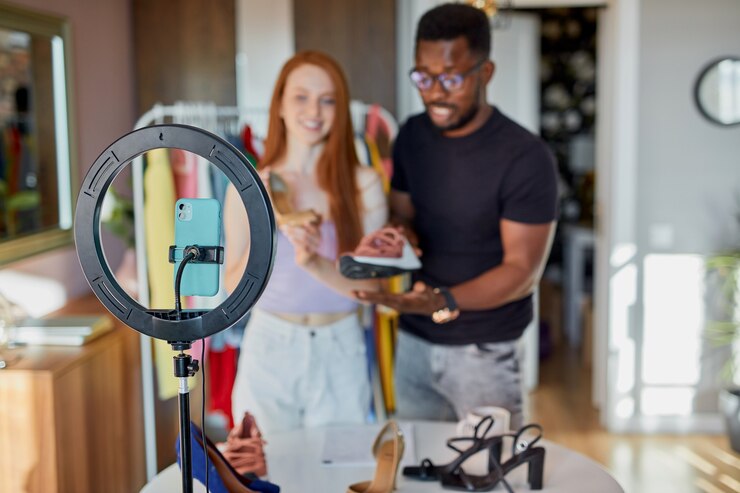
Conclusion: Using influencers to promote your brand, like Ladnek Media, can boost your marketing. With the right plan, you can form strong partnerships through influencer outreach that help both you and the influencer. Focus on building real connections and offering value to each other. This way, your brand can grow and reach new people easily.
The Future of Digital Marketing: Using AI for Growth and Customer Connection
Digital marketing is changing because of AI-generated content. Tools that write automatically and create images help marketers work more efficiently. At Ladnek Media, these AI tools enhance digital content writing, making reaching the right audiences easier and improving engagement.

Role of AI in Digital Marketing
Digital marketing uses AI to improve marketing. AI includes machine learning, natural language processing (NLP), and data analytics. These tools help collect and analyze a lot of data quickly. Because of this, marketers can see trends and understand how customers behave in real-time. AI helps them predict customers’ wants, provide personalized experiences, and make smarter choices. This is very important today, as using data in marketing can increase sales and make customers happier.
AI’s Influence on Traditional Marketing
Traditional marketing is often labor-intensive and requires creativity and a workforce. AI is changing this by automating processes and generating insights from vast datasets. Businesses can scale faster without needing to hire more staff. AI-driven automation lets marketers refine strategies and explore creative avenues, ensuring messages resonate more with their target audiences.
Exploring AI Tools for Content Creation
Many AI tools for content marketing help with writing, editing, and design. Tools like OpenAI’s GPT-4, Jasper, and Copy.ai can quickly create blog posts, email messages, and product descriptions. These tools are helpful for businesses that want to create content quickly while keeping it personal.
AI design platforms like Canva and Lumen5 help create great marketing images and videos. They use language processing to create clear messages that fit a brand’s style. As AI improves, these tools sound more like what humans write.
Improving Efficiency with AI Content Generation
AI-generated content helps people work faster and better. Marketers can give a few ideas and get well-written content in just a few minutes. AI handles boring tasks, like writing product descriptions, so teams can meet tight deadlines and maintain quality. This lets companies focus on creative ideas and more complicated marketing plans.
With this better efficiency, businesses can grow their marketing efforts without hiring more people.
Enhancing Customer Engagement with AI
AI is very helpful for connecting with customers by looking at their data. When brands create personalized content that matches people’s likes, they are more interested. AI can send the right message at the right time, which helps increase clicks and sales.
In email marketing, AI helps choose the best times to send messages, catchy subject lines, and suitable content based on users’ actions. This makes emails more interesting and relevant. By using AI’s ability to predict trends, brands can create valuable interactions that encourage customer loyalty.
Identifying AI-Generated Content
As AI-generated content becomes more advanced, spotting it gets harder. Here are key signs to look for:
Signs of AI-Generated Content
Repetitive Language: AI uses repetitive sentence structures and phrases, often needing more creativity.
Lack of Depth: AI can provide factual information but often needs more unique insights.
Unusual Formatting: AI needs help with complex formatting, leading to awkward sections.
Inconsistent Tone: AI-generated text may fluctuate between formal and casual tones, making it feel less cohesive.

Tools for Detecting AI Content
AI Text Classifiers: Tools like OpenAI’s AI text classifier can identify AI-generated text.
Plagiarism Checkers: Since AI uses existing data, plagiarism checkers can flag content that closely resembles other sources.
Manual Reviews: Human editors can spot inconsistencies and lack of originality.
Best Practices for Content Quality
Balancing AI use with human oversight is essential for authentic, high-quality content. AI can handle the heavy lifting, but human editors should refine the content before publishing. This ensures alignment with the brand voice and maintains reader value.
Risks of Over-Reliance on AI
While AI enhances efficiency, over-reliance can lead to issues:
Loss of Creativity: AI lacks emotional intelligence, which can result in generic content.
Inaccuracy: AI-generated content may contain errors if unchecked by humans.
Ethical Concerns: Marketers must ensure compliance with regulations to avoid copyright infringement.
FAQs
Q1. What is a paid media agency?
Ans. A paid media agency helps businesses run ads on different platforms to get more attention and engagement.
Q 2. How can small businesses benefit from a marketing company?
Ans. Small businesses can use a marketing company to create special plans and tools that help them connect with their target customers better.
Q 3. What is digital content writing?
Ans. Digital content writing means creating online materials, like articles and social media posts, that grab readers’ attention and share useful information.
Q 4. How can a small business marketing company use AI?
Ans. A marketing company can automatically use AI to do repetitive tasks, study customer information, and make personalized content that appeals to their audience.
Conclusion
Digital marketing is changing because of AI, especially when creating content. Marketers at Ladnek Media, a leading marketing company for small businesses, need to be careful not to rely too much on AI. It’s important to balance the speed of AI with human creativity to keep marketing real and high-quality.

